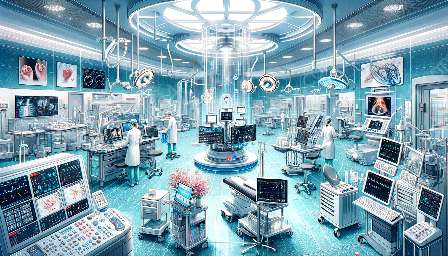The renal system, consisting of the kidneys and associated structures, is crucial for regulating the body's fluid balance, filtering waste products, and maintaining overall homeostasis. This topic cluster will delve into the anatomy and physiology of the renal system, uncovering its intricate workings and exploring its significance in the field of medical devices.
Anatomy of the Renal System
The renal system is composed of the kidneys, ureters, bladder, and urethra. The kidneys, situated in the abdominal cavity, are responsible for filtering the blood, removing waste products, and regulating the body's electrolyte balance. Each kidney is made up of millions of nephrons, the functional units responsible for filtering the blood and producing urine.
Kidney Structure: The kidneys are bean-shaped organs, with the outer cortex and inner medulla. The renal artery delivers blood to the kidneys, which is then filtered in the nephrons, and the purified blood is returned to circulation through the renal vein.
Nephron Structure: Nephrons consist of a renal corpuscle, which includes the glomerulus and Bowman's capsule, as well as a renal tubule. The glomerulus filters the blood, and the renal tubule reabsorbs essential substances while excreting waste products to form urine.
Physiology of the Renal System
The renal system performs several vital functions, including:
- Regulating fluid balance by adjusting urine volume and concentration based on the body's needs
- Filtering metabolic waste products, such as urea and creatinine, from the bloodstream
- Maintaining electrolyte balance by reabsorbing essential ions and excreting excess ions
- Contributing to blood pressure regulation through the renin-angiotensin-aldosterone system
These functions are essential for maintaining overall health and preventing the buildup of toxic substances in the body. The renal system also plays a crucial role in acid-base balance, helping to regulate the body's pH levels.
Renal Pathways and Function
The renal system is involved in complex pathways responsible for the production and excretion of urine. The process begins with the filtration of blood in the glomerulus, followed by the reabsorption of essential substances, such as glucose and water, in the renal tubules. The remaining filtrate is ultimately excreted as urine through the ureters, collected in the bladder, and eliminated through the urethra.
The regulation of urine volume and composition is finely tuned by the renal system, ensuring that the body maintains a healthy balance of fluids and electrolytes. Medical professionals and researchers use this understanding of renal pathways to develop and improve medical devices for the diagnosis and treatment of renal disorders.
Role of Medical Devices in Renal Health
Medical devices related to the renal system encompass a wide range of tools and technologies used for diagnosis, monitoring, and treatment. These devices play a critical role in the management of renal diseases and conditions, including:
- Dialysis Machines: Hemodialysis and peritoneal dialysis machines are used to filter the blood and remove waste products in individuals with compromised kidney function.
- Renal Imaging Technologies: Ultrasound, CT scans, and MRI are employed to visualize the structure and function of the kidneys and urinary system, aiding in the diagnosis and monitoring of renal diseases.
- Urine Analysis Equipment: Various devices are used to analyze urine samples for the presence of abnormal substances, such as protein, blood, or bacteria, providing valuable insights into renal health.
- Renal Stents and Catheters: These devices are utilized in the management of urinary obstructions and the drainage of urine from the kidneys and bladder.
The development and advancement of medical devices related to the renal system are driven by research in anatomy, physiology, and pathology, allowing for improved patient care and outcomes in the treatment of renal disorders.
Conclusion
In conclusion, the renal system is a fascinating and vital aspect of human anatomy and physiology. Its intricate structure and physiological functions are crucial for maintaining the body's internal environment. Furthermore, the close relationship between the renal system and medical devices underscores the significance of understanding renal health in the context of healthcare technology and innovation.


